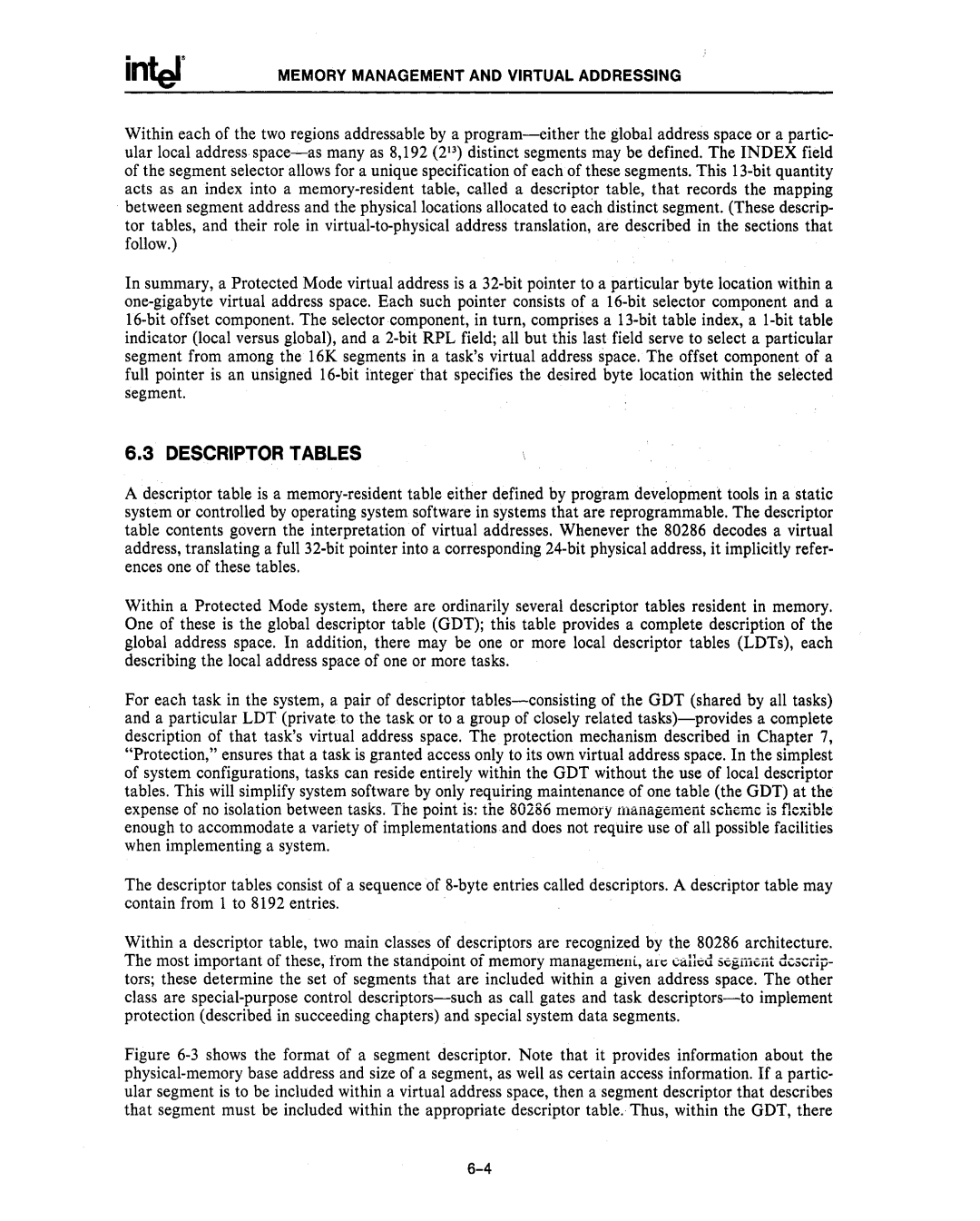
MEMORY MANAGEMENT AND VIRTUAL ADDRESSING
Within each of the two regions addressable by a
In summary, a Protected Mode virtual address is a
6.3 DESCRIPTOR TABLES
A descriptor table is a
Within a Protected Mode system, there are ordinarily several descriptor tables resident in memory. One of these is the global descriptor table (GDT); this table provides a complete description of the global address space. In addition, there may be one or more local descriptor tables (LDTs), each describing the local address space of one or more tasks.
For each task in the system, a pair of descriptor
The descriptor tables consist of a sequence of
Within a descriptor table, two main classes of descriptors are recognized by the 80286 architecture. The most important of these, from the standpoint oi memory managemellL, an; .:;alled segmeiit descrip- tors; these determine the set of segments that are included within a given address space. The other class are
